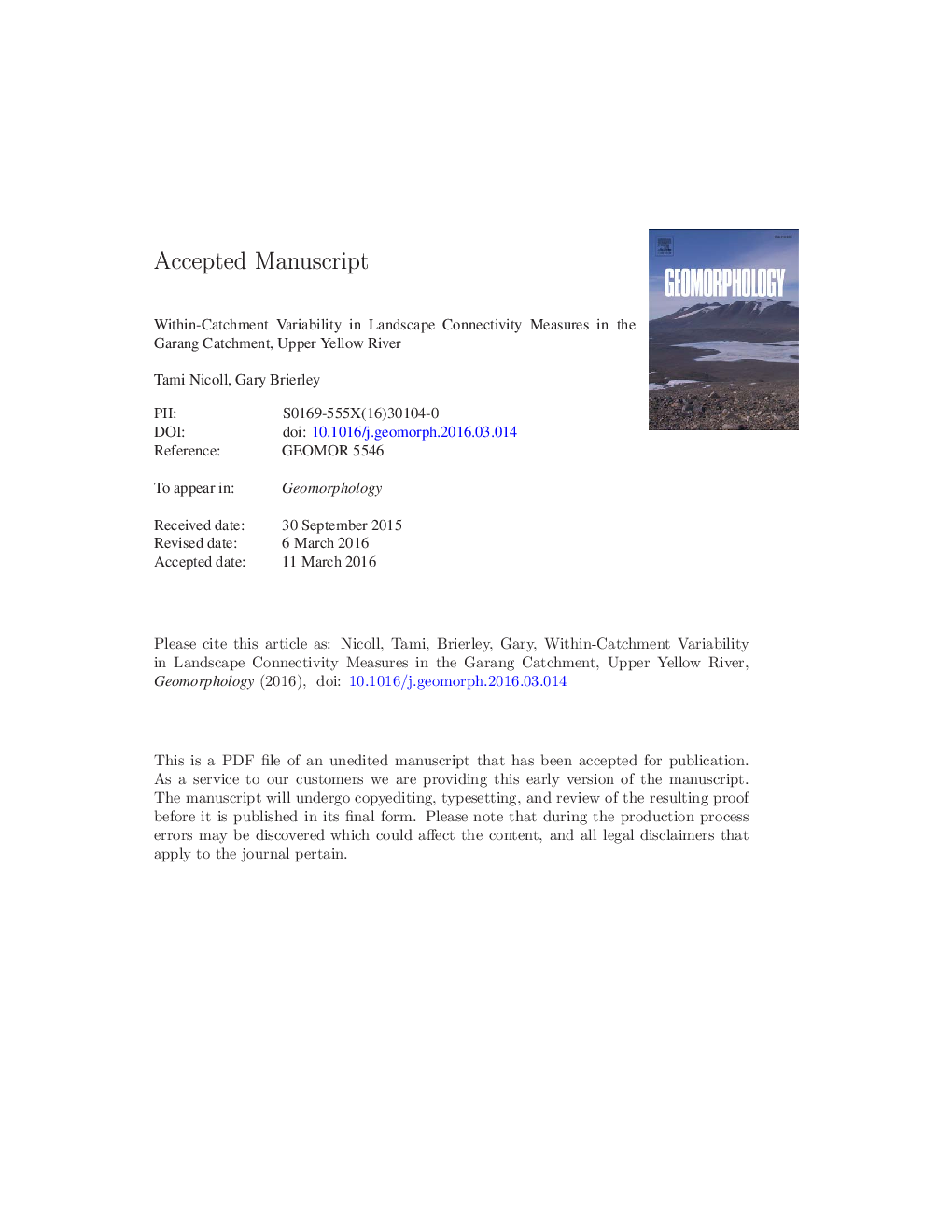| Article ID | Journal | Published Year | Pages | File Type |
|---|---|---|---|---|
| 5781146 | Geomorphology | 2017 | 49 Pages |
Abstract
The degree of landscape connection has wide-ranging implications for sediment availability, frequency of transport, and the nature of sediment storage within a basin. Two methodological approaches for assessing landscape connectivity are applied within the Garang subcatchment of the upper Yellow River. A GIS-based geomorphometric index was calculated for the catchment and compared to a methodology linking interpretation of satellite imagery and field mapping of sediment storage to slope threshold analysis. Landscapes of the Garang catchment are highly contrasting and can be separated into three zones: i) a highly disconnected upper catchment of low-relief with large inactive sediment stores; ii) a transitional zone where present landscape dynamics are controlled in large part by past incisional processes in the form of large alluvial fan/terrace deposits; and iii) a highly connected and highly dissected landscape within the lower catchment that has little accommodation space for sediment storage. The geomorphometric index shows general agreement with the patterns in landscape connectivity observed through imagery and field investigations. However, it estimates similar levels of connectivity in landscapes with observed (dis)connectivity, reflecting limitations of the calculation. While rapidly calculated geomorphometric indices of landscape connectivity provide useful appraisals of relative within-catchment variability in systems such as the Garang catchment, caution is urged in conducting broader-scale analyses using the same tools. Findings from this study highlight the importance of field-informed appraisals of landscape dynamics, site-specific characteristics and the imprint of historical (evolutionary) context in making such comparative assessments.
Related Topics
Physical Sciences and Engineering
Earth and Planetary Sciences
Earth-Surface Processes
Authors
Tami Nicoll, Gary Brierley,
